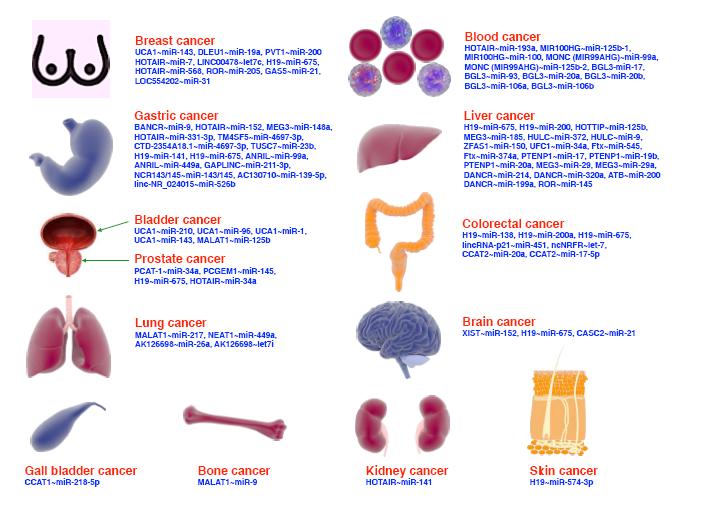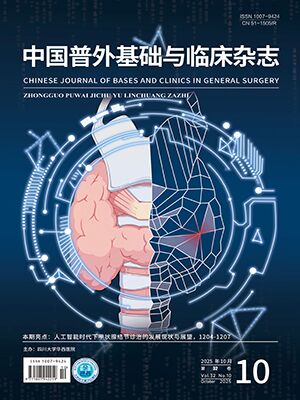| 1. |
Veronesi U, Cascinelli N, Mariani L, et al. Twenty-year follow-up of a randomized study comparing breast-conserving surgery with radical mastectomy for early breast cancer. N Engl J Med, 2002, 347(16): 1227-1232.
|
| 2. |
Chung AP, Sacchini V. Nipple-sparing mastectomy: where are we now?. Surg Oncol, 2008, 17(4): 261-266.
|
| 3. |
Adams WP, Lipschitz AH, Ansari M, et al. Functional donor site morbidity following latissimus dorsi muscle flap transfer. Ann Plast Surg, 2004, 53(1): 6-11.
|
| 4. |
Du J, Liang Q, Qi X, et al. Endoscopic nipple sparing mastectomy with immediate implant-based reconstruction versus breast conserving surgery: a long-term study. Sci Rep, 2017, 7: 45636. doi: 10.1038/srep45636.
|
| 5. |
Feng Y, Wen N, Liang F, et al. Endoscopic nipple- or skin-sparing mastectomy and immediate breast reconstruction with endoscopic harvesting of the latissimus dorsi flap: A preliminary experience of an innovative technique. Breast J, 2022, 2022: 1373899. doi: 10.1155/2022/1373899.
|
| 6. |
Lai HW, Chen DR, Liu LC, et al. Robotic versus conventional or endoscopic-assisted nipple-sparing mastectomy and immediate prosthesis breast reconstruction in the management of breast cancer: A prospectively designed multicenter trial comparing clinical outcomes, medical cost, and patient-reported outcomes (RCENSM-P). Ann Surg, 2024, 279(1): 138-146.
|
| 7. |
万安弟, 齐晓伟, 张毅, 等. 乳腺癌微创手术的研究现状与进展. 中国普外基础与临床杂志, 2022, 29(11): 1433-1438.
|
| 8. |
吴淞, 章佳新. 乳腺腔镜手术操作空间建立的进展分析. 中国继续医学教育, 2020, 12(12): 114-116.
|
| 9. |
Kompatscher P. Endoscopic capsulotomy of capsular contracture after breast augmentation: a very challenging therapeutic approach. Plast Reconstr Surg, 1992, 90(6): 1125-1126.
|
| 10. |
Friedlander L, Sundin J. Minimally invasive harvesting of the latissimus dorsi. Plast Reconstr Surg, 1994, 94(6): 881-884.
|
| 11. |
Nakajima H, Sakaguchi K, Mizuta N, et al. Video-assisted total glandectomy and immediate reconstruction for breast cancer. Biomed Pharmacother, 2002, 56 Suppl 1: 205s-208s. doi: 10.1016/s0753-3322(02)00281-0.
|
| 12. |
Kitamura K, Ishida M, Inoue H, et al. Early results of an endoscope-assisted subcutaneous mastectomy and reconstruction for breast cancer. Surgery, 2002, 131(1 Suppl): S324-S329. doi: 10.1067/msy.2002.120120.
|
| 13. |
Sakamoto N, Fukuma E, Higa K, et al. Early results of an endoscopic nipple-sparing mastectomy for breast cancer. Ann Surg Oncol, 2009, 16(12): 3406-3413.
|
| 14. |
Lai HW, Wu HS, Chuang KL, et al. Endoscopy-assisted total mastectomy followed by immediate pedicled transverse rectus abdominis musculocutaneous (TRAM) flap reconstruction: Preliminary results of 48 patients. Surg Innov, 2015, 22(4): 382-389.
|
| 15. |
Wu QF, Yu YH, Zhu X, et al. Development of video-assisted breast cancer surgery: Initial experience with a novel method for creating working space without prior liposuction. Mol Clin Oncol, 2017, 7(1): 32-38.
|
| 16. |
刘子腾, 李宗晏, 付晓燕, 等. 腋窝入路腔镜下双侧乳房皮下切除Ⅰ期假体重建术的临床效果. 中国普外基础与临床杂志, 2022, 29(11): 1427-1432.
|
| 17. |
Lai HW, Lin SL, Chen ST, et al. Single-axillary-incision endoscopic-assisted hybrid technique for nipple-saring mastectomy: Technique, preliminary results, and patient-reported cosmetic outcome from preliminary 50 procedures. Ann Surg Oncol, 2018, 25(5): 1340-1349.
|
| 18. |
Kuo YL, Chang CH, Chang TY, et al. Endoscopy-assisted total mastectomy with and without immediate reconstruction: An extended follow-up, multicenter study. Plast Reconstr Surg, 2021, 147(2): 267-278.
|
| 19. |
Lee HY, Chang YW, Yu DY, et al. Comparison of single incision endoscopic nipple-sparing mastectomy and conventional nipple-sparing mastectomy for breast cancer based on initial experience. J Breast Cancer, 2021, 24(2): 196-205.
|
| 20. |
Toesca A, Peradze N, Galimberti V, et al. Robotic nipple-sparing mastectomy and immediate breast reconstruction with implant: First report of surgical technique. Ann Surg, 2017, 266(2): e28-e30. doi: 10.1097/SLA.0000000000001397.
|
| 21. |
Feng Y, Xie Y, Liang F, et al. Twenty-four-hour discharge of patients after endoscopic nipple-sparing mastectomy and direct-to-implant breast reconstruction: safety and aesthetic outcomes from a prospective cohort study. Br J Surg, 2024, 111(1): znad356. doi: 10.1093/bjs/znad356.
|
| 22. |
Chung K, Xie Y, Liang F, et al. Reverse-sequence endoscopic nipple-sparing mastectomy with immediate implant-based breast reconstruction: an improvement of conventional minimal access breast surgery. Front Oncol, 2024, 14: 1366877. doi: 10.3389/fonc.2024.1366877.
|
| 23. |
Zhou J, Xie Y, Liang F, et al. A novel technique of reverse-sequence endoscopic nipple-sparing mastectomy with direct-to-implant breast reconstruction: medium-term oncological safety outcomes and feasibility of 24-h discharge for breast cancer patients. Int J Surg, 2024, 110(4): 2243-2252.
|
| 24. |
Yang H, Liang F, Xie Y, et al. Single axillary incision reverse-order endoscopic nipple/skin-sparing mastectomy followed by subpectoral implant-based breast reconstruction: Technique, clinical outcomes, and aesthetic results from 88 preliminary procedures. Surgery, 2023, 174(3): 464-472.
|
| 25. |
吕青. 置身事内: 华西乳腺(癌)腔镜手术的开创与发展创新. 中国普外基础与临床杂志, 2022, 29(11): 1405-1414.
|
| 26. |
Qiu M, Liang F, Xie Y, et al. Clinical outcomes of transaxillary reverse-sequence endoscopic nipple-sparing mastectomy and direct-to-implant prepectoral breast reconstruction: A prospective study of initial 68 procedures. Ann Surg Oncol, 2024, 31(4): 2777-2785.
|




